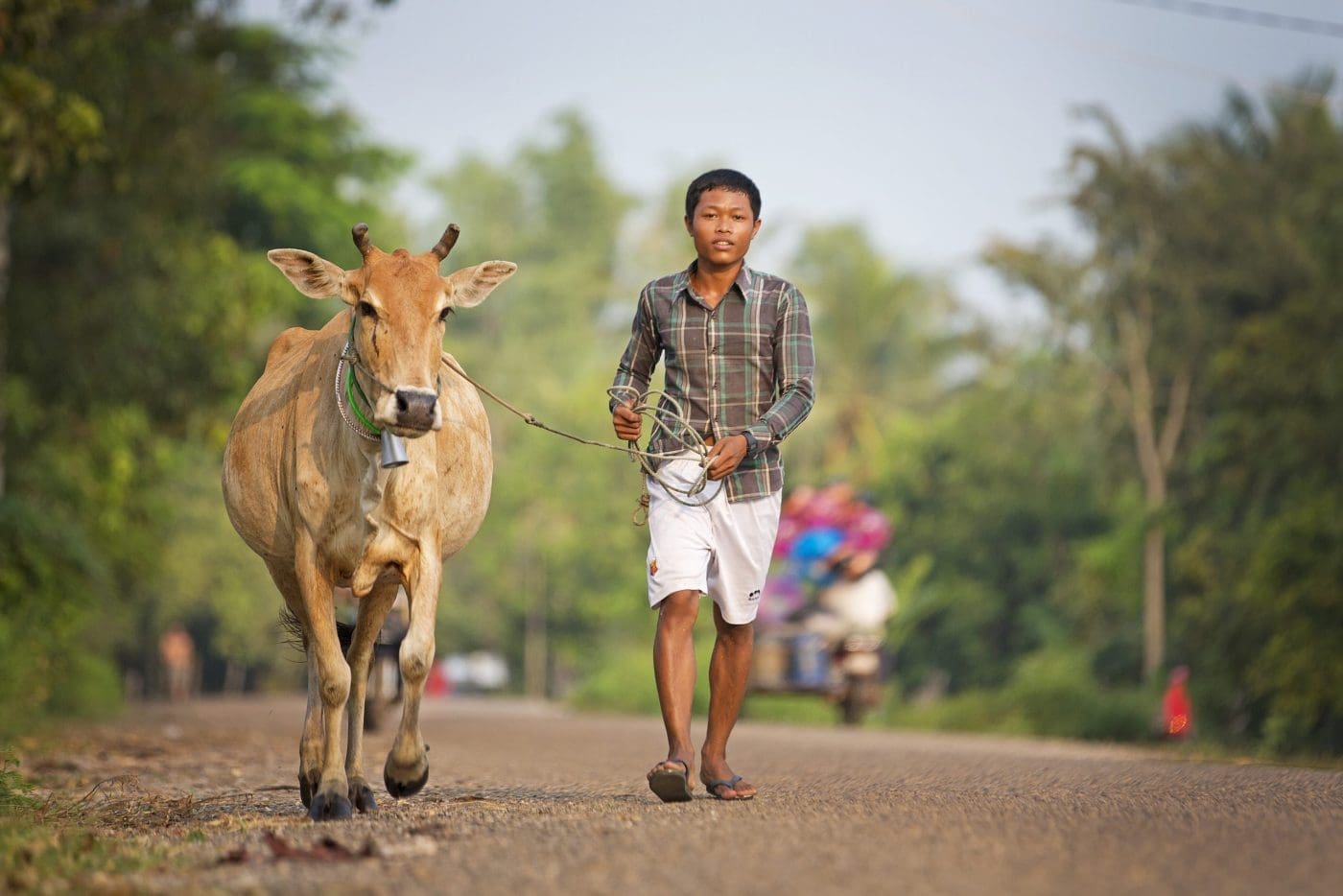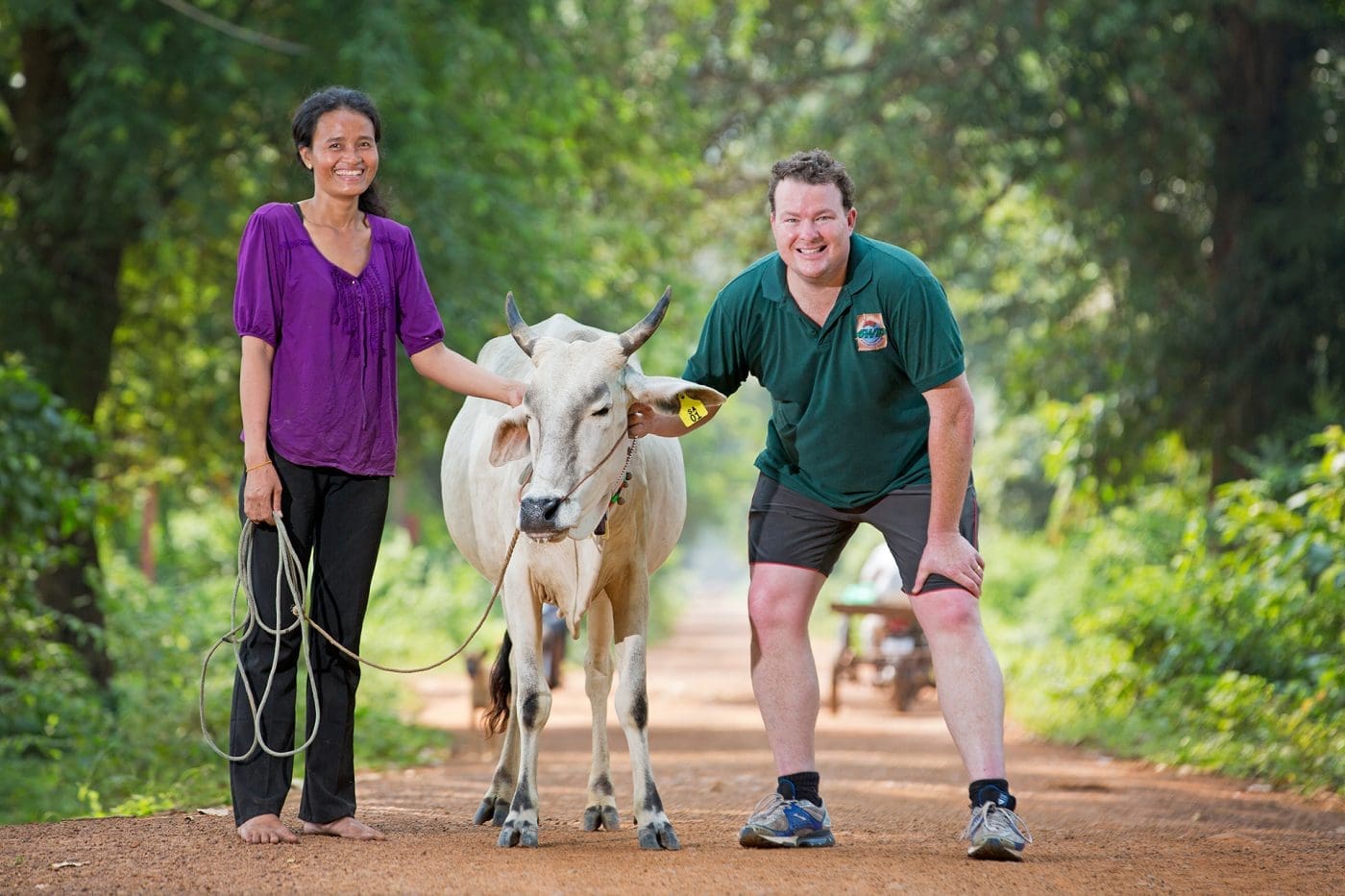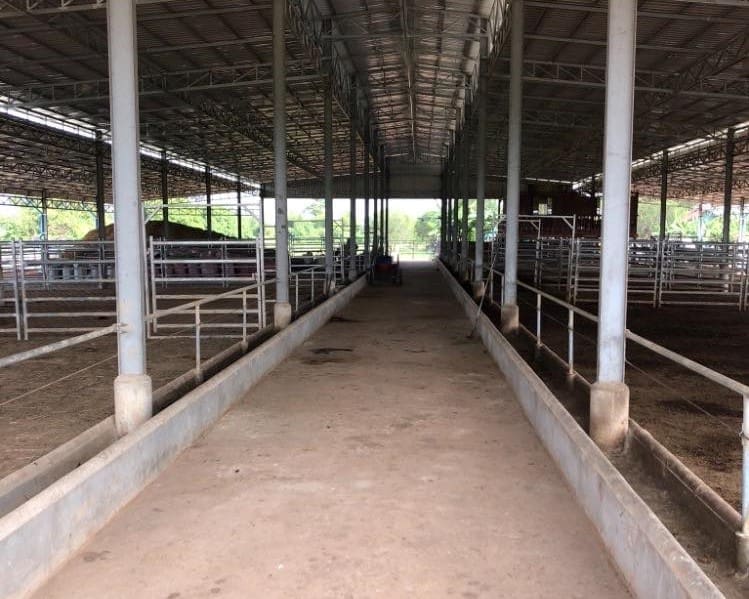Editor’s note: ABC Landline TV did a segment on the Cows for Cambodia Project last weekend. Click here to access via iview. For readers interest, here is Beef Central’s original story published back in February.
THE South-East Asian live cattle trade is well-known for its massive logistical efforts, with 20,000 head boatload shipments procured from some of the most remote parts of Australia.
So it might be a surprise to hear that carrying four Australian Brahman bulls and two heifers into Cambodia at the end of last year has taken a change of legislation, more than $25,000 and seven years to organise.
The cattle were sent to a charity called Cows for Cambodia – which loans pregnant cows to families, assists them to bring the cow to calving, allows them to keep the calf and gives ongoing assistance with joining. It is often described as a “cow bank”.
However, regulation has kept Australian genetics out of the program, meaning the charity has been relying on Cambodian cattle. Founder and South Australian television host Andrew Costello, or Cosi, said the situation was not ideal.
“We tried to source the best bulls we could in Cambodia, but the genetics are not there,” he said.
“Sometimes we could be paying US$700 for a cow, which is Bos Indicus but looks like a jersey cow you would buy in Australia.”
With the goal of importing Australian breeding cattle into Cambodia, the charity needed the two countries to sign a “breeder protocol”, which required signatures from both governments.
“If I looked at anything that I have done in my career, one of the most complicated and challenging things I have done is get this ‘breeder protocol’ drawn up and signed,” Mr Costello said.
“It took me two years, with the help of a lot of a lot of people and it was the biggest pain the bum to line the governments up. But it was signed and it means anyone now can take breeder cattle into Cambodia.”
Australian studs donate cattle
The next step of finding the Australian genetics was the job of Central Qld Brahman stud producer Wallace Gunthorpe – who oversees most of the cattle side of the charity.
With Mr Gunthorpe’s son taking over his Qld cattle property, he decided to put his time into charity work. He said he heard about Cows for Cambodia and Cosi while doing some consulting work in Asia.
“I told Cosi that I like people, I like travelling, I like cattle and I would love to help – so now I have had almost seven years of unpaid employment,” he jokingly said.

Half-a-dozen Australian cattle are settling into a charity in Cambodia, which has been using local cattle until last year. Photo: Cows for Cambodia
Given a limited budget to source cattle for the charity, Mr Gunthorpe hit the phones to see what he could find.
“The first person I rang was my son Adam and he gave me a bull, then I rang five other people and by the end of the night we had the six animals donated,” he said.
“It was extremely generous because I think the bulls would have been $8000 to $10,000 each without trying and then heifers would have been about $6000 to $7000 each.
“I had to be a bit particular about the type of cattle we were getting because I didn’t want to go over there and cause calving problems. I had to go to places that did not have high birth weights and we needed cattle that had good udders and good temperament.”
Live exporter pays for flight
Transport the cattle to Cambodia was the next challenge – with the flight costing $25,000. They received a $20,000 donation from Brisbane-based exporter AUSTREX.
“We had the cattle donated, most of the freight donated and the entire exercise only ended up costing about $5,000,” Mr Gunthorpe said.
“I was going to fly with the cattle, because animal welfare is a big deal to us, but it didn’t work out,” he said.
“So, I went ahead of the cattle and spent a bit of time building a stock crate, with a non-slip floor – which doesn’t exist over there because most people just put them in the back of a steel tray.”
Mr Gunthorpe took a seven-hour trip from the Cambodian capital Phnom Penh to the charity’s farm, which he said was eventful.
“We were pulled over by the police three times in the first hour wanting to check our paperwork – I guess it might have looked a bit different,” he said.
“The third time we were pulled up, a big sergeant was waving his arms at me and through my interpreter I found out he was wanting to take one of the cows and feed it to his village. I thought ‘not on my watch, after all we’ve done’.
“We had a little discussions and said we were working with the government and he eventually backed down.”
Mr Gunthorpe was greeted at the Cows for Cambodia farm by an Australian tour group, run by Cosi, and a large group of locals helping him back the truck into the yards. He set up some feed bunks and has been tracking their progress.
“I get video updates from the people on the farm, I have sorted out a feed ration and the cattle seem to be doing really well,” he said.
Mr Costello said he was hoping to use the shipments as a core breeder herd and give the Cambodians access to Australian genetics.
“Most Cambodians only have one cow and they will be able to use our bull for free, whether they are part of the charity-or-not,” he said.
“They will identify their cow is on heat, walk her to our farm and use the bulls there.”
Charity moving into Africa
With the success of Cows for Cambodia, Mr Costello has convinced Mr Gunthorpe to help him with the development of Cows for Botswana. The new charity has different challenges to Asia, including to management of lions.
It is being run more like a traditional farm, where the cattle will be processed and be delivered to schools as frozen boxed beef.
“Basically, a lot of kids in Botswana don’t get enough protein in their development years and we can bridge that gap by feeding them at school,” he said.
“A lot of beef is consumed in Botswana, but it has had a lot of problems Foot and Mouth Disease. I think when their export markets improve there will be a lot of potential in Botswana.
“The access to genetics is really good too because it so close to South Africa and the country itself has some good cattle.
“I think Botswana has the potential to overtake Cambodia and we have the potential to run 400-500 cows.”


